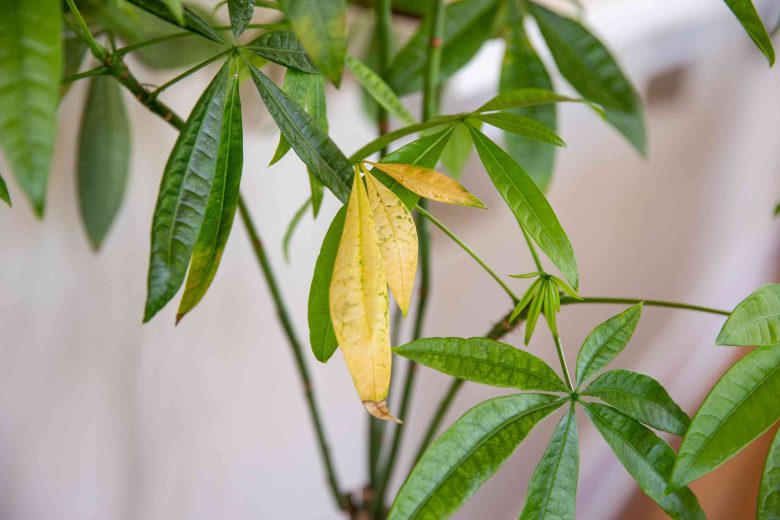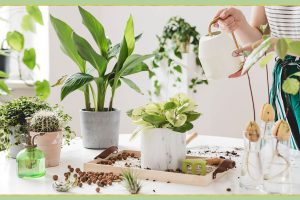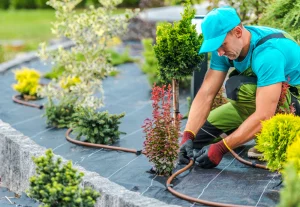In a vibrant garden, few things are more concerning than the sudden appearance of yellow leaves on a once lush plant. Yellowing leaves can be a distress signal from their green companions, indicating problems ranging from nutritional deficiencies to pests and diseases. Understanding the cause and taking appropriate solutions is crucial to maintaining a thriving garden. In this comprehensive guide, we reveal the secrets behind yellowing plant leaves, explore the various factors that contribute to it, and provide practical solutions to rejuvenate your green paradise.
Learn the Language of Huangye
Yellowing of leaves, scientifically known as chlorosis, occurs when chlorophyll (the green pigment responsible for photosynthesis) breaks down and exposes the yellow pigment underneath. This phenomenon can manifest itself in different ways: yellowing of the entire leaf, yellowing between the veins or even the appearance of yellow spots. Each pattern provides valuable clues about the health of the plant and can help diagnose the underlying problem.
Common Causes of Yellowing Leaves
- Nutritional deficiencies: Yellowing leaves often indicate a nutritional deficiency, with nitrogen, iron and magnesium being the main causes. Nitrogen deficiency causes generalized yellowing, while iron deficiency manifests as interveinal chlorosis or interveinal yellowing. A magnesium deficiency, on the other hand, can cause the leaf edges to turn yellow.
- The Water Dilemma: Both submersion and too much water can cause the leaves to turn yellow. Underwater plants lack essential moisture, causing wilting and yellowing. Conversely, too much water can flood the roots, hinder nutrient absorption, and cause leaves to turn yellow due to stress and root rot.
- The plague: Insects such as spider mites, aphids, and whiteflies are notorious for sucking vital fluids from plants, causing leaves to turn yellow and wilt. In addition, nematodes in the soil can disrupt nutrient uptake, causing yellowing.
- Disease: Fungal infections such as root rot and bacterial diseases can disrupt the plant’s ability to absorb nutrients, causing the leaves to turn yellow. Poor air circulation and high humidity create favorable conditions for these diseases to thrive.
- pH Imbalance: An unbalanced soil pH affects nutrient availability. Acid-loving plants may turn yellow in alkaline soil and vice versa. Regular soil testing can help maintain optimal pH levels for specific plants in your garden.
Diagnosis of Yellowing Leaves
An accurate diagnosis of the cause of yellowing leaves is critical for effective treatment. Careful observation of yellowing patterns, coupled with an evaluation of factors such as drinking habits, soil conditions and recent weather changes, can provide important information. Conducting soil tests and inspecting plants for pests and diseases are important diagnostic tools.
Remedies and Treatments
- A nutritious diet: Address nutrient deficiencies by choosing a balanced, slow-release fertilizer. Nitrogen-rich fertilizers address nitrogen deficiencies, while iron chelates address iron deficiencies. Epsom salt contains magnesium sulfate, which is effective for magnesium deficiencies. Regular fertilization ensures that plants receive a steady supply of essential nutrients.
- Watering Wisdom: Develop a consistent watering schedule to ensure your plants get enough moisture without wetting the soil. Use a well-drained potting and soil mix. Drip and soaker hoses provide controlled, deep watering that promotes root health and reduces the risk of overwatering.
- Natural Pest Control: Encourage natural enemies such as ladybugs and lacewings to control pests. Neem oil is a natural insecticide that is effective against a variety of garden pests. Regular inspection of your plants and prompt treatment can prevent long-term pest damage.
- Disease management: Maintain good garden hygiene by removing affected leaves and plants immediately. Use copper-based fungicides to control fungal diseases. Proper spacing between plants ensures sufficient air circulation and reduces the risk of disease transmission.
- Adjusting Soil pH: Test the soil pH and adjust if necessary. Acid-loving plants benefit from using sulfur or peat moss to lower the pH, while lime can raise the pH of alkaline plants. Regular testing and adjustments create the best growing environment.
- Pruning and removal: Pruning away yellow, diseased, or insect-infested leaves redirects the plant’s energy toward healthy growth. Thinning out overcrowded areas and removing affected plants can completely prevent the problem from spreading to neighboring plants.
Prevent Future Yellowing
- Regular maintenance: Be vigilant about your garden. Regular inspections can identify problems early enough to take timely action. Healthy plants are more resilient, so proactive care is crucial.
- Cover: Mulch acts as a natural insulator and regulates soil temperature and moisture. It also prevents weed growth and minimizes competition for nutrients and water. Organic mulch, such as straw or wood chips, enriches the soil as it breaks down.
- Correct plant selection: Choose plants that are suitable for your climate and garden conditions. Native and adaptable species are naturally more adaptable and require fewer interventions. Studying the specific needs of plants creates a harmonious garden environment.
Conclusion
Yellowing leaves were once a cause for concern, but can now be a valuable indicator of your plant care efforts. By deciphering the language of yellowing, understanding its cause, and taking the right remedies, you can transform your garden into a vibrant green oasis. With a combination of careful care, timely intervention, and a little gardening wisdom, you can not only restore the health of your plants but also cultivate a thriving, green oasis where plants thrive and yellow leaves become a thing of the past.
FAQs
1. What are the most common causes of yellowing plant leaves? How can gardeners effectively diagnose specific problems facing their green companions?
Discover the different factors that cause yellowing leaves, from nutritional deficiencies to pests and diseases. Learn to interpret the signs and symptoms to provide accurate diagnosis and targeted solutions for your plants.
2. How can good plant care practices, including watering techniques, soil amendments, and regular inspections, prevent leaves from turning yellow and maintain a healthy, vibrant garden?
Check out the proactive steps gardeners can take to prevent yellowing leaves. Learn the importance of balanced watering, soil pH management, and vigilant garden maintenance to create an environment where plants thrive.
3. What role do natural remedies and organic treatments play in addressing leaf yellowing caused by pests and diseases? How can gardeners integrate these methods into their plant care routine?
Discover the world of natural pest control solutions. From neem oil to beneficial insects, discover eco-friendly ways to protect your plants without harmful chemicals to ensure a safe and vibrant garden ecosystem.
4. Why is understanding soil health and nutrient balance important to prevent leaf yellowing? How does a gardener enrich the soil and provide essential nutrients to plants?
Dive deeper into the importance of soil health and its impact on plant nutrition. Learn about soil testing, nutrient deficiencies, and the art of organic fertilization to ensure your plants get the nutrients they need to prevent yellowing and thrive.
5. What are your long-term strategies for maintaining a healthy garden? How can gardeners create a resilient, disease-resistant ecosystem where yellow leaves are rare rather than the norm?
Discover sustainable practices for long-term garden health. From proper plant selection to careful gardening techniques, discover strategies to promote resilience and disease resistance. Create a garden where yellow leaves rarely appear so your plants can thrive all year round.



